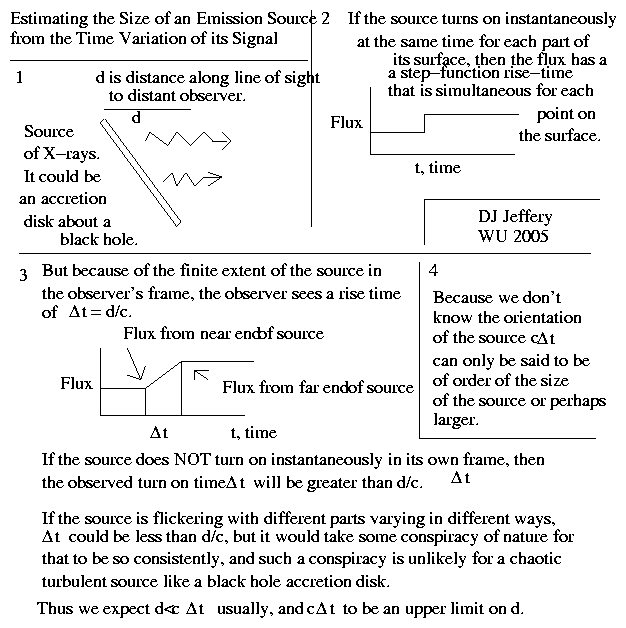
Caption:
Estimating the size scale of disk emission source from the time
variation of its signal. There are some glitches in figure and it seem a bit too complex.
Features:
A distant observer will observe NOT an instantaneous brightening, but a rising
brightening over a time period Δt = d/c, where d is the distance along the
line-of-sight
between near and far ends of the disk.
Since one measures Δt, calculates d = c*Δt.
If one knew (and usually one does NOT know) the
inclination θ
of the disk (i.e., the angle between the
rotation axis
and the line-of-sight,
one can calculate the
diameter D of the
disk from D = d/sin(θ).
If θ = 90°, then D = d.
If θ = 0°, then D = ∞---which is an extreme, impossible limit.
In consequence, the calculated d based on a characteristic variation time
for the light signal
from a disk will only be a characteristic size scale.
This means the disk diameter will be
maybe d to with an
order of magnitude or so.
Thus, the size of the Cygnus X-1 is
d = c * Δt = 3*10**5 km/s * 0.01 s = 3000 km .
A sophisticated analysis shows that the
accretion disk
diameter
is actually ∼ 30,000 km or 10 times as large as our crude estimate.
Credit/Permission: © David Jeffery,
2003 / Own work.
Image link: Itself.
Local file: local link: size_time.html.
File: Black hole file:
size_time.html.